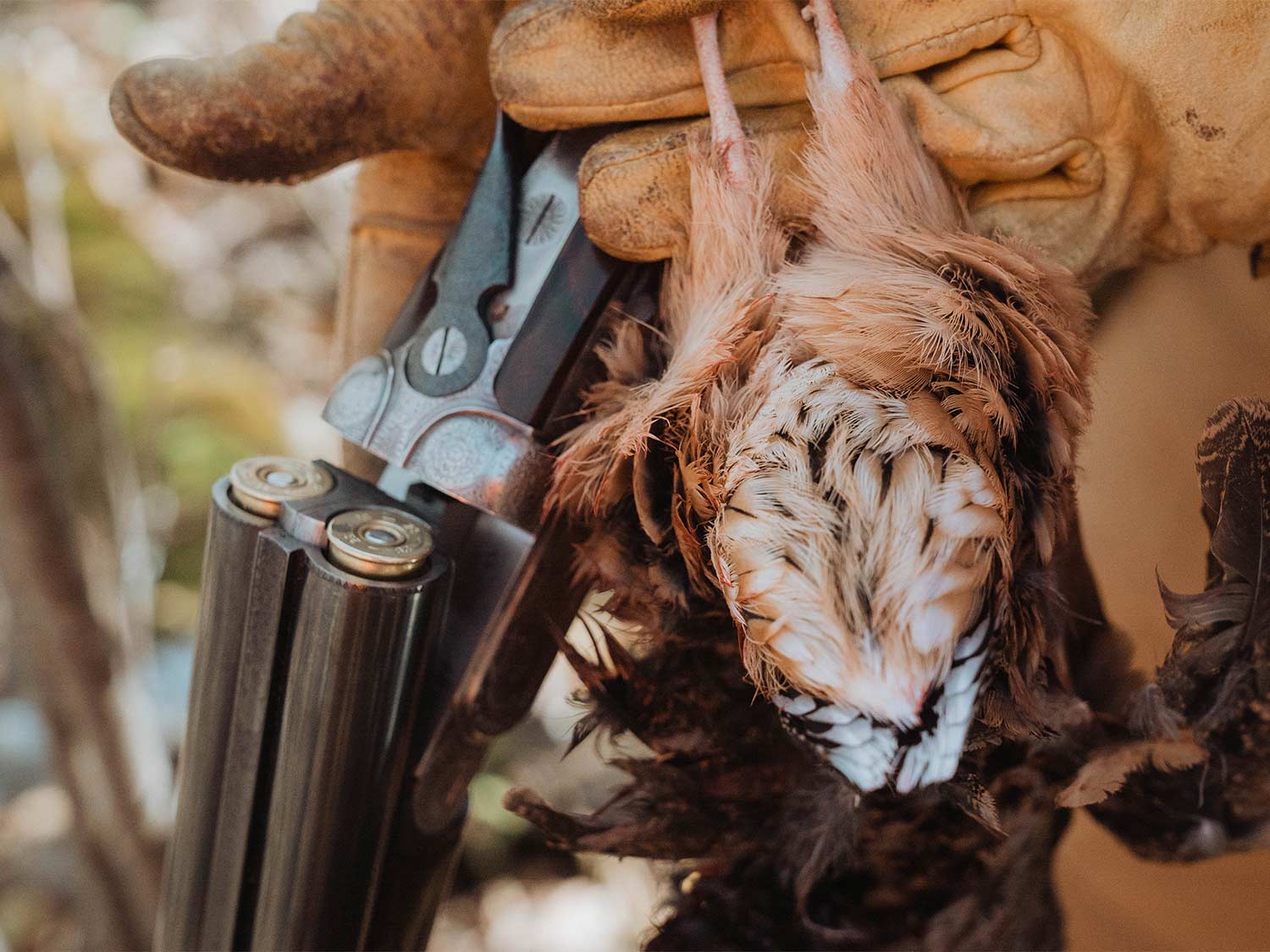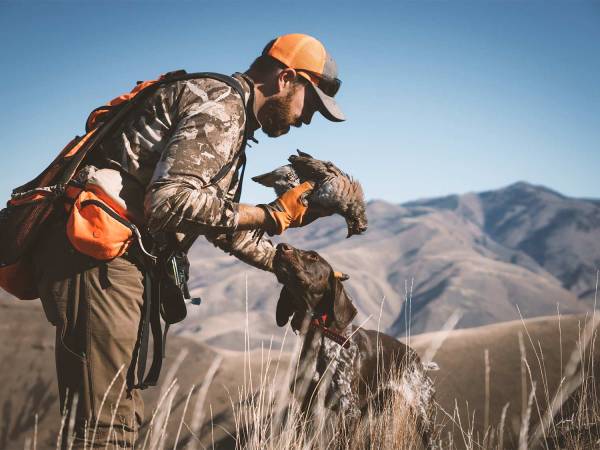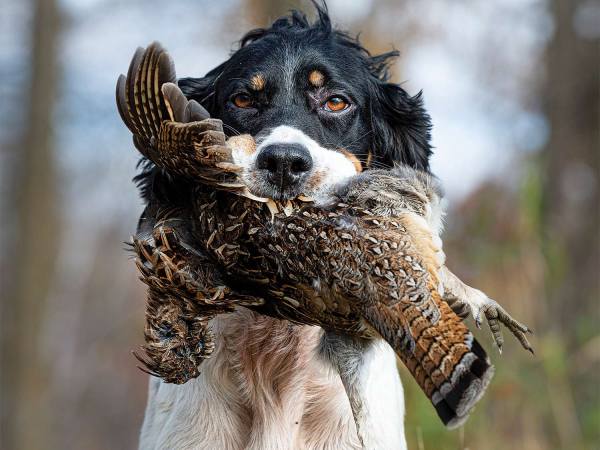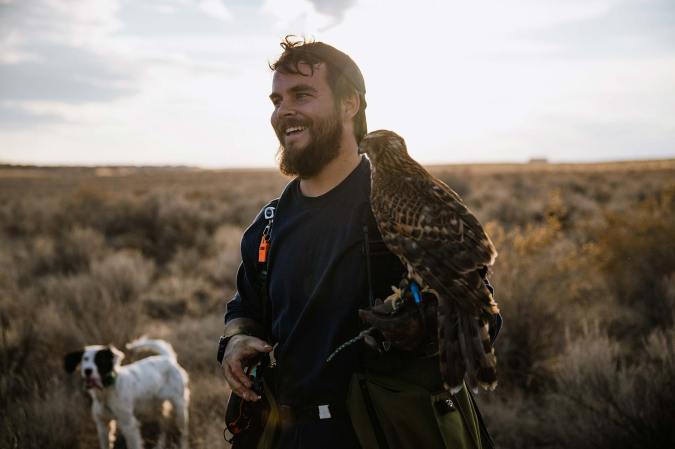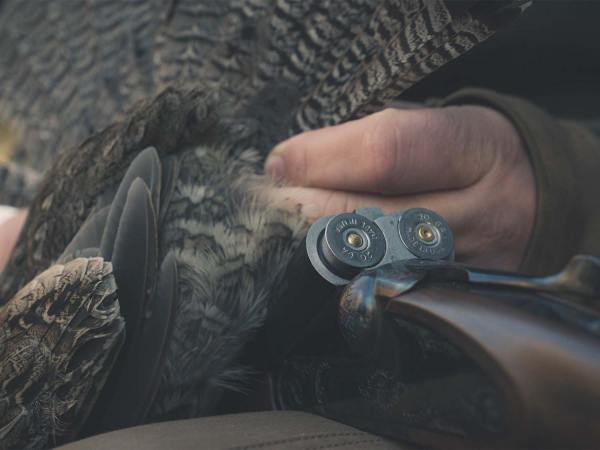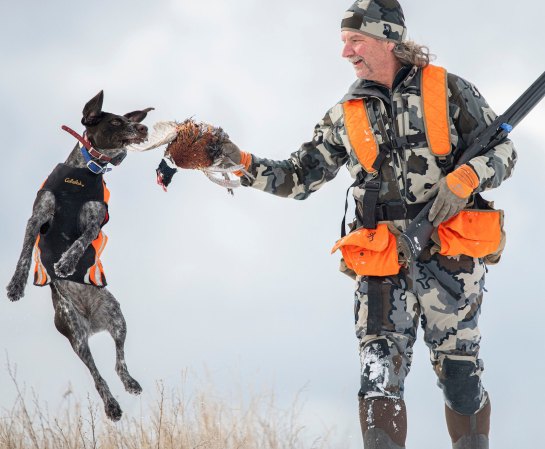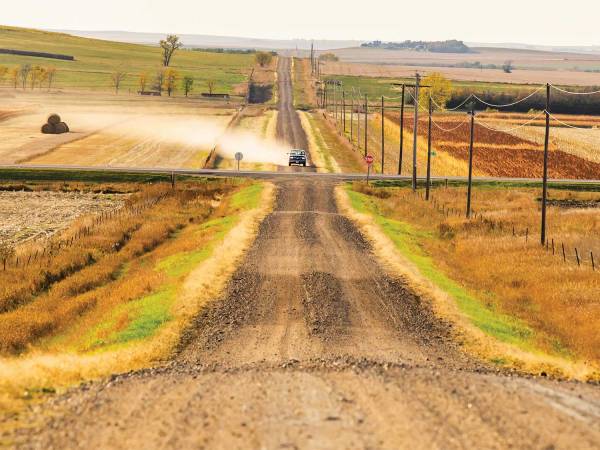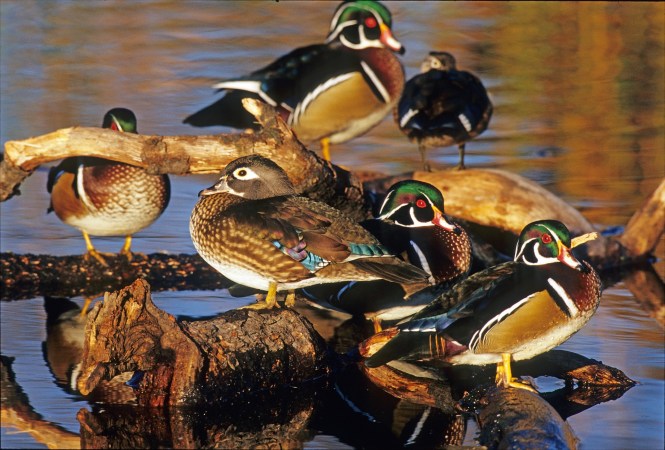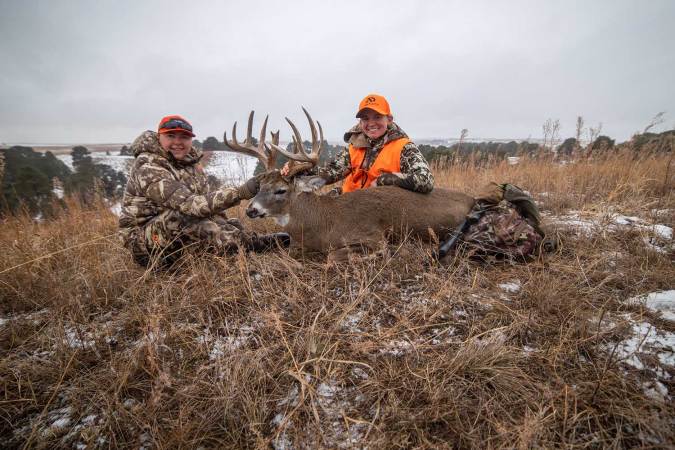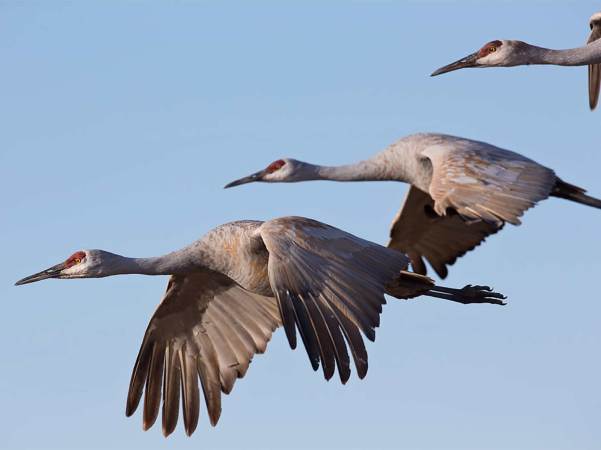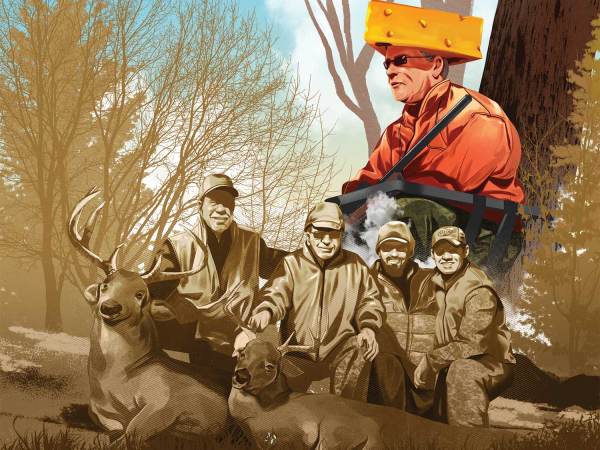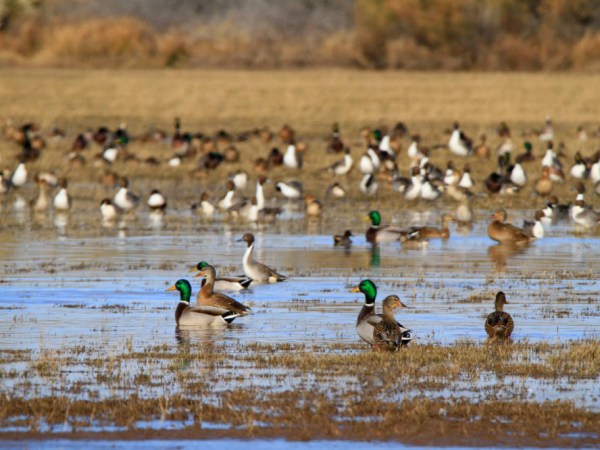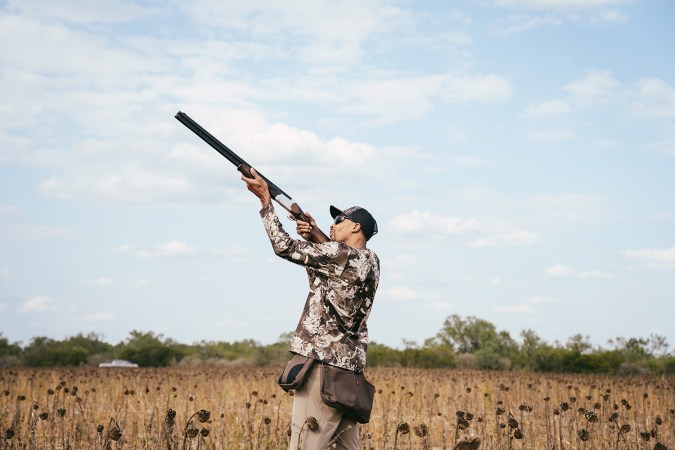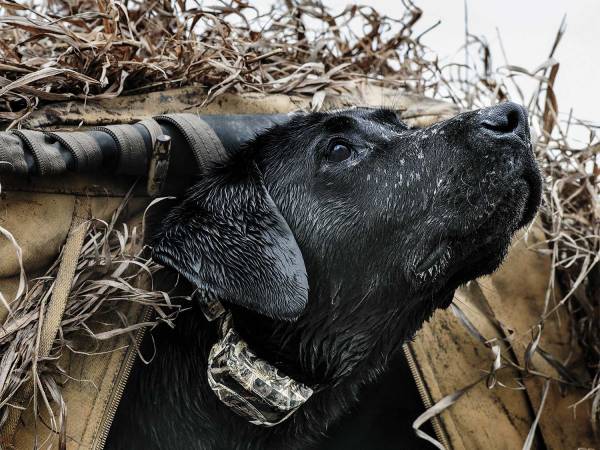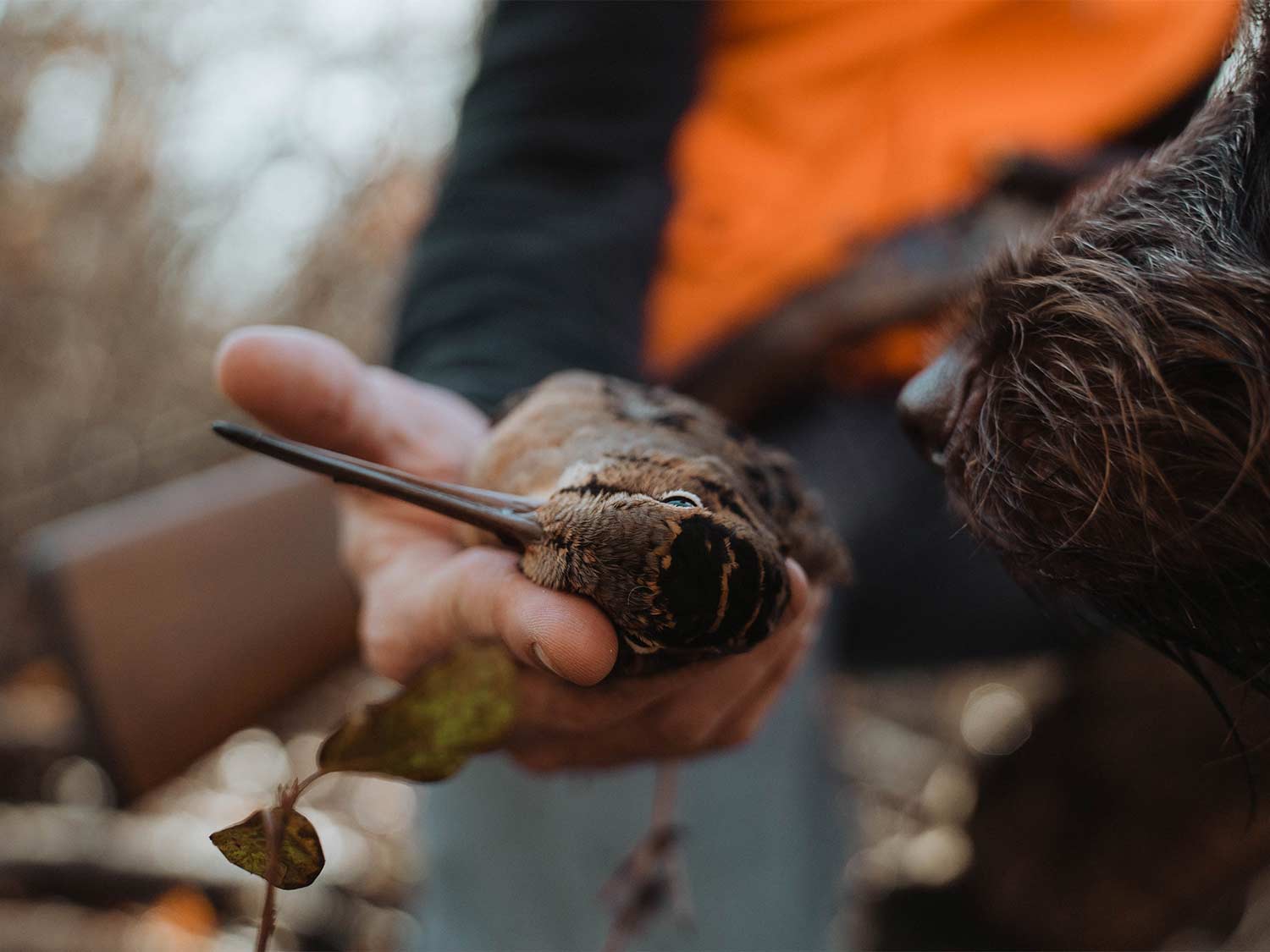
Silence can be a rather jarring experience. And sounds, with their strong associations, can hurtle us through time and space. I associate silence with wild places, camps of my youth—good memories, to put it simply. As my truck door slammed closed with an unnaturally loud sound, the opening day of grouse and woodcock season was upon us in New Hampshire. Three and a half hours of driving north, starting in complete darkness, had brought me to one of my favorite covers. I stood there for a second, listening to nothing other than the faint sound of the river in the distance. For any hunter, opening day—no matter what your game—is the hard-reset day of our year. The realities of life from the previous months are beat back with a new burst of energy and positivity.
A slight whimper snapped me back into the present and the task at hand. I opened the door to grab my side-by-side, dog collars, and bird vest. The whimper turned to scratching. Grim, my Wirehaired Pointing Griffon, was as excited as I was for this day (maybe more so) and after numerous weeks of pre-season training on resident woodcock close to home, the smell of gun oil confirmed his suspicion that something more exciting was unfolding on this day.
That initial silence was quickly swallowed by my conversation with the dog and his ever-growing excitement. I strapped Grim’s GPS collar around his neck; the bell hanging from it began a soft jingling, muted slightly by the duct tape strapped around the clacker inside. The sound of that bell made me think of the man up in Maine who had given it to me as a gift while I was traveling with the Ruffed Grouse Society. This time, the latch of the tailgate shutting once again snapped me back to the present.
Grim hopped around like a toddler on a sugar high. Moments like these have earned him a nickname: the bucking bronco. His joy literally uncontainable, the sounds shifted to paws bouncing from dirt to water to leaves and then there was the bell, ringing in a language only bird hunters can interpret. The silence from when the engine cut out was quickly forgotten. My mind had shifted to the moments of pause we always hope to find in bird cover: the even more profound silence of a dog on point.
I have a confession to make. Although I have a special place in my heart for hunting ruffed grouse, it is the American woodcock that has captivated me and earned my true love. Some may think it’s an obscure species to hunt, because unless you are a ruffed grouse hunter, not many people happen upon woodcock casually. Woodcock rarely wander unsuspecting onto logging roads nor do they offer the iconic, drumming display of their neighbor, the ruffed grouse. They are a hidden species. If you asked my dog how he felt about the American woodcock, his ears would perk up in eager agreement that this bird should be in his life every day. In fact, a couple of dancing males provided him with endless backyard entertainment this past spring. He could often be found standing on point for long periods wondering why I had not loaded a shotgun and backed him up. In reality, I was tortured the whole time; in true novice fashion, I sat there wondering just how much these backyard encounters were ruining my pointing dog. At least the fence stood between them.
The Misfit of the Uplands
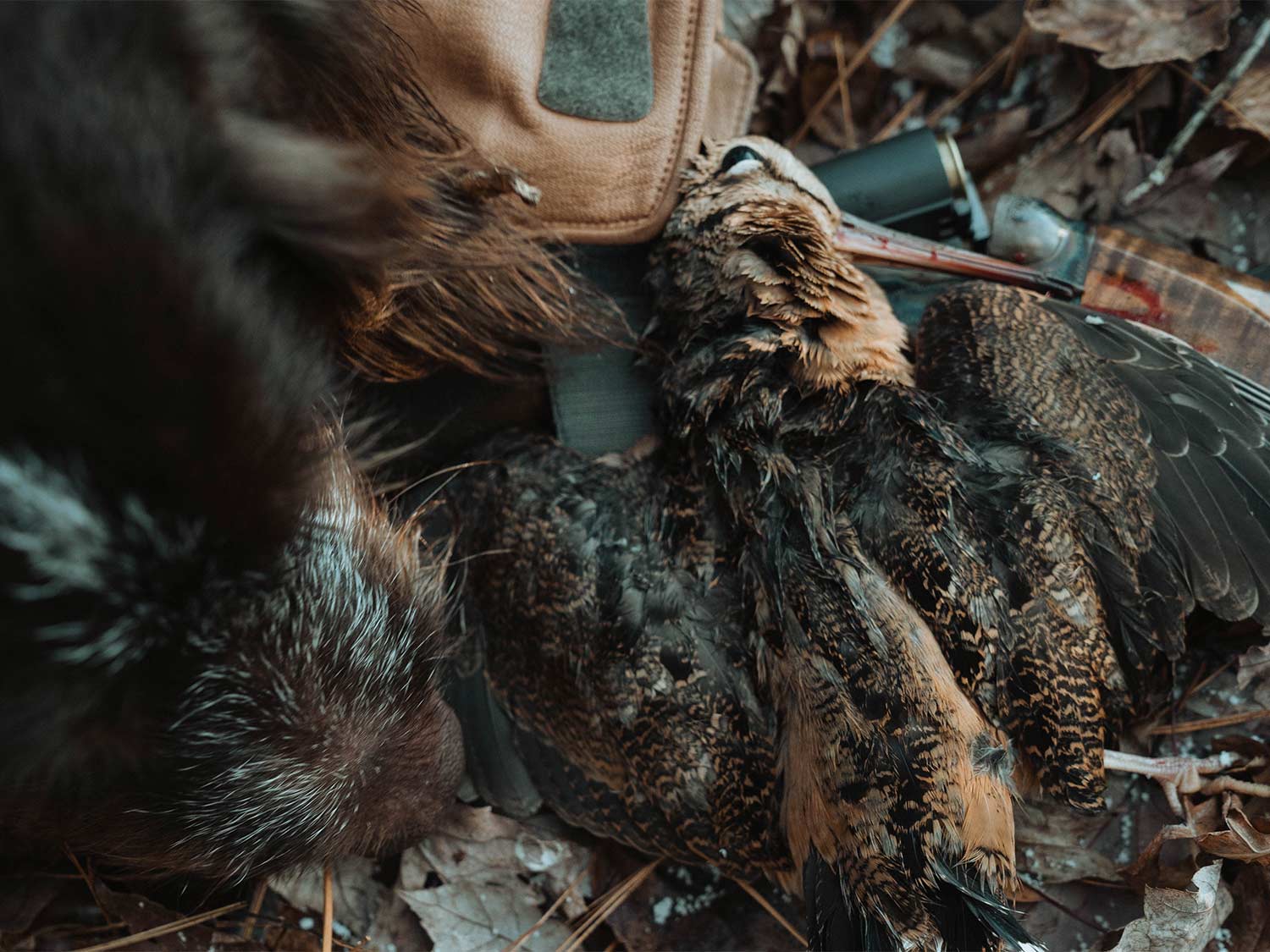
Native Americans once referred to these birds as wandering souls. This unusual migratory species, with a long, narrow bill designed for worm probing, is an odd-looking bird at first glance. Woodcock can be found in resident populations in many parts of Canada, as well as northern states. When they migrate south for the winter, they go as far as Georgia, and in abundance to places like Louisiana and east Texas. Their flight routes are broken into the Eastern and Central flyways. Recent GPS tracking studies by the Eastern Woodcock Migration Research Cooperative (EWMRC) have shown that birds hop across these imaginary flyway borders, which only fuels the excitement for us woodcock nerds. Luckily, they can be hunted in virtually every state along the way. In most places, despite falling under federal migratory bird laws, you do not need to use steel shot to hunt them, although I make it a point to do so.
In more recent years the woodcock has gained popularity among a new upland community. This is not so much because they are a great bird to work dogs on (which they are), but because in some places they are the only wild game bird left in abundance. Bobwhite quail are a distant memory in parts of the South and our bellwether, the ruffed grouse, is barely hanging on in other places.
Tracking the Woodcock Migration
When northern birds make their way to southern cover, we refer to it as a “flight.” And just like the dark arts of moon phases for deer, you could probably start a bar fight by speculating what triggers the birds to suddenly pick up and move. Some research tells us that weather systems can play a role—usually the birds are hoping to stay ahead of storms, take advantage of wind currents, and when all else fails, hunker down. Woodcock studies have shown that birds can fly upward of 400 miles in a single flight.
A bird that has yet to migrate, but lives in the area, is referred to as a “resident bird.” Woodcock that come in from the north and stop for a brief moment are referred to as “flight birds.” Ask another hunter if what appears to be a weak-flying bird when flushed indicates a resident or flight bird, and you’ll likely start another fight. (I’m no biologist, so I won’t say one is true and one isn’t, but I do put some weight into the idea that weak flush attempts and short hops are indicative of migrators.)
“Yehhp.” One sound and Grim snapped from bucking off his imaginary rider to hunting. He dipped into the cover with the utmost confidence. I began walking up the overgrown logging road to gain a bit of elevation on him. When upland hunting with a dog, mountainous terrain must be accounted for when shooting, for it’s always safer to keep the dog lower than your gun. After a few steps, I realized that all I heard was the sound of my rubber boots compressing the moist sand as I walked; the bell had stopped. Grim was only a few feet off the logging road and locked up in true confidence. I expected to see grouse in this cover, just not here.
“Trust the dog.” No wiser words were even spoken. I was doing just that by walking out the point, but I was also listing inside my head all the possible non-game species that it could be. Sorry, Grim.
The next sound was not the distinct whistle of a rising woodcock, just a weak flutter of wings like a bat hovering only a few feet off the ground. Grim chased the bird as soon as it took flight and I never even raised my shotgun.
The bird got out ahead of him and landed. As soon as it dipped down, I shouted, “Whoa!”
Grim snuck in another couple of steps before he froze. I felt obligated to pursue this bird at the start of a new season, if only to stoke the flame inside of Grim for the many hunts that lie ahead of us. The bird was clearly sitting on the ground just a short distance ahead. I walked past Grim, a few yards to his right, looked him in the eye, and again said “Whoa” with my hand up. The eye contact said, “Hey dude, if you want this bird, stay where you are.”
I moved ahead and again the bird flushed, gaining elevation this time, with the barrels of my 20-gauge in hot pursuit. A quick tug on the front trigger brought the bird back to earth. Soon after, Grim had the bird in his mouth and his tail wagged so violently that his whole body was wagging with it. I placed my gun on the ground, sat down, and Grim came to me as we scratched and celebrated our first bird of the season. Then he gently let it fall into my hand, turned, and went to find another.
Where to Find Woodcock
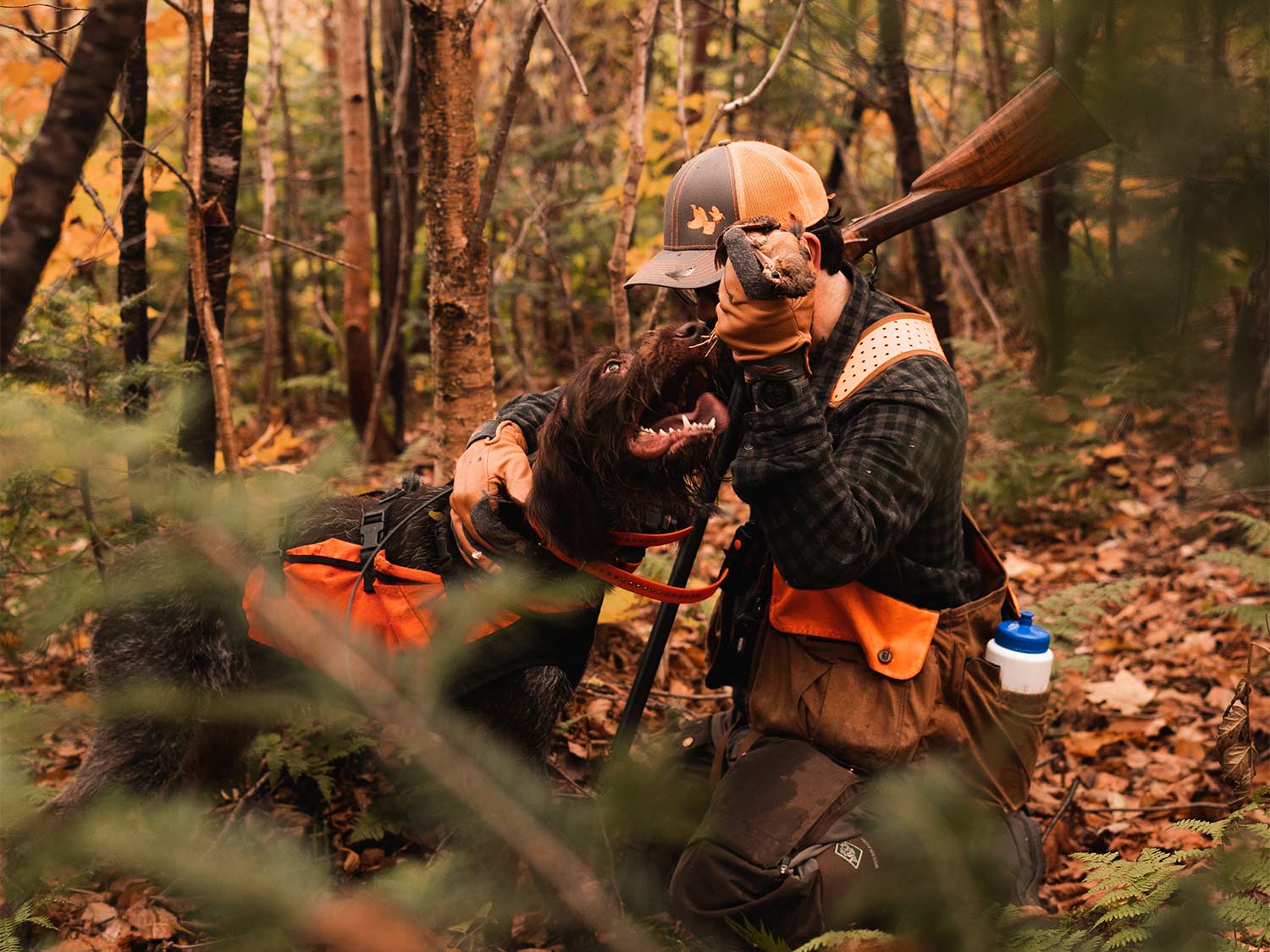
It’s not often that I come upon what I would consider a flight bird so early in the season, but just a 45-minute drive to the north, Canada had a cold snap in the last couple of days.
The woodcock migration provides an oasis for the upland hunter in between grouse. I once heard the upland artist Jay Dowd say, “The woods become a bit lonelier when they are gone.”
I live south of prime grouse country (New Hampshire), and woodcock offers wild bird opportunities for me and my pup within walking distance of our home. These opportunities stretch all the way to suburban Connecticut while keeping us within a three-hour drive. To really make the most of the experience and extend the season, the migration can be followed south. Following flights through new states, unfamiliar places, and new cover comes down to a few key concepts.
First, the birds need to be migrating for more southern reaches. Word of mouth can go a long way. With the advent of the digital age, plenty of podcasts, Facebook community pages, and Instagram posts will reveal mass migration events. You can even visit the Ruffed Grouse Society website and watch the woodcock migration map. The map is a collaborative effort in partnership with EWMRC and it’s updated regularly.
Waterways like rivers can be a great guideline for finding new cover as you wander further away from home. The surrounding areas are often fit for woodcock habitat, which holds true in the southern states. The second principle is understanding where woodcock want to land, rest, and feed. To make things simple when it comes to finding woodcock cover, just focus on their primary food source: worms. Worms live in soft soil that’s rich with organic matter. Find the right soil and you can find the birds. I even have a friend who uses GIS soil data overlaid with wetland maps to find woodcock cover.
Woodcock like high-stem-density cover which is often, but not always, found in early successional forests. Young trees or shrubs that create a tangled web of impenetrable mesh are a great place to start. They also need moisture, because worms live in moist soil (but not standing water, where worms will die). It’s not unusual to see some puddling in a woodcock cover, perhaps seepage from a river or other water source. The main thing is that woodcock need exposed soil to probe their beaks and find worms.
A friend told me about hunting stocked pheasants last season, when he kicked up a bunch of woodcock in a charred area leftover from a prescribed fire. I found this particularly interesting, as I had recently read about a similar occurrence in the book Woodcock Shooting, the 1908 classic by Edmund Davis. I did some digging, and found one biologist who theorized that the fire would expose soil that was previously inaccessible to the birds, thereby creating new feeding grounds.
Although woodcock prefer high-stem-density cover most of the time, pay attention to forest openings and fields, too. Normally the edges have that high-density cover, and the openings provide space for roosting and their spring sky dance ritual.
To recap: Find an open area (even a small one) with soft soil and thick undercover beside it, and you may just happen upon woodcock. I have found good woodcock cover in abandoned apple orchards, alders along brooks, overgrown farmland, or in places adjacent to log landings, clear cuts, and logging roads. North faces of mountains and hills can provide more moisture and cooler temps as well. Just remember that timing is a crucial part of hunting migratory woodcock. There are days when a cover will be overrun with birds and your three-bird limit could be had even on a bad shooting day. The next day, the very same cover could be completely empty, with not a single bird to be found.
Read Next: 9 Places to Find More Woodcocks
You Can Hunt With or Without a Dog
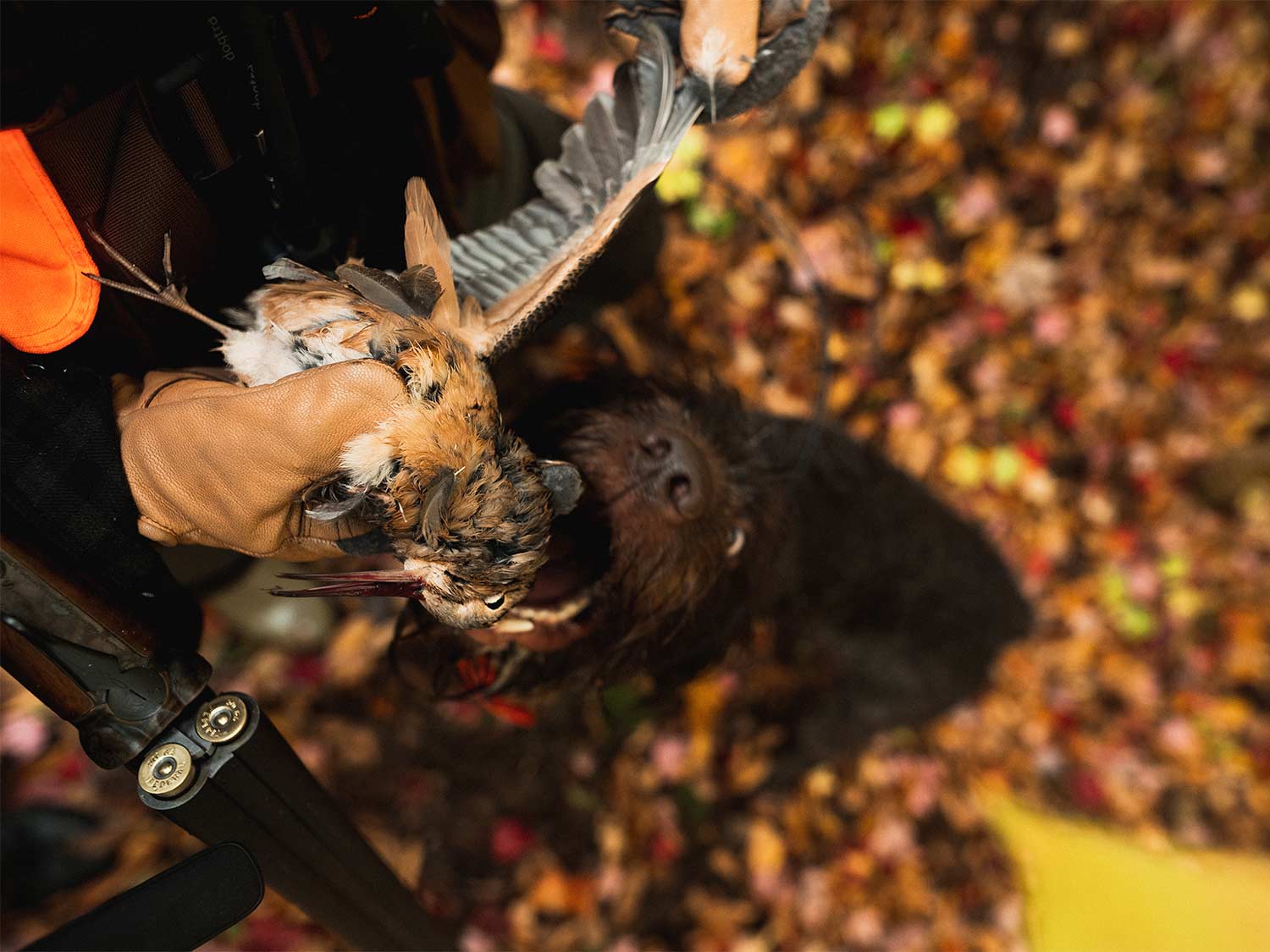
Woodcock handle well for dogs because they tend to stay put on point. For those bold enough, they can even be hunted without a dog. Back in my dog-less days, I would grid cover methodically, knowing birds will often not flush unless almost stepped on. Just know that recovering this “little russet” bird can be a considerable challenge without a dog. In a pinch, look above ground level in case a bird has hung up in branches or the cover above.
Many people look down on woodcock meat, but this due to the usual misunderstandings associated with wild game. I prefer to age the birds—guts in—for a few days in the refrigerator. (Just about every cut of meat we eat from the grocery store is aged for a reason: it tastes better.) Do not overcook woodcock; they are meant to be eaten medium-rare. Lastly, the legs are white meat and delicious in their own right. It is considered, by some uplanders, a mortal sin to throw them away.
If you catch the woodcock bug, you’ll find yourself jumping state lines like a wandering soul, always looking for your next hidden adventure. My season often starts in Maine and New Hampshire, wanders through Massachusetts, and eventually concludes in the cover of Connecticut. On some days, I hunt more than one state. Truth be told, though, I may just head even further south this season. Because when woodcock begin to fade from my grouse haunts, a touch of desperation sets in.
